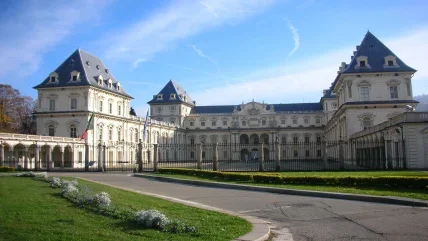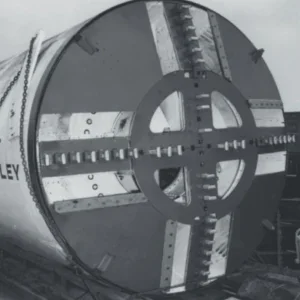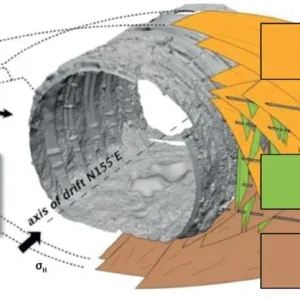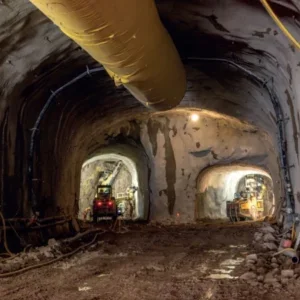
There are a number of tunnelling education programmes around the world and these come, primarily, in two styles.
The first is one in which working engineers go to a university periodically for intense study, but maintain full-time or near full-time employment. Many of these programmes involve lecturers that come in from industry.
The other main style is the more traditional full-time student programme where it is difficult to work full time and pursue the degree programme.
Some examples of the first style include the courses offered by Politecnico di Torino in Italy, Warwick University in UK and University of Leoben in Austria.
ITALY
Italy’s Politecnico di Torino University offers a ‘Tunnel and TBM’ master’s degree. Daniele Peila, the university’s associate professor at the Engineering Department for Environment, Territory and Infrastructures, and course director, says that the Tunnelling and TBM masters is running for its 11th year in 2018 and they usually run every other year, with an average 15 students per class.
“The level of employment after attending our course is at 98 per cent,” Peila says. “Most of the time students work in the same company where they undertook their practical training.
“This course was born 20 years ago from the vision of professor Sebastiano Pelizza, in collaboration with Geodata Turin and with the endorsement of the International Tunnelling Association (ITA) and the Italian Tunnelling Society (SIG). “We aimed to merge academic lectures and practical training provided by experts from the industry, such as Mapei, Herrenknecht, Atlas Copco, Sandvik and Robbins, and from design companies such as Geodata Turin.”
The course runs for five hours every day for five months, which is then followed by an internship.
“In the last run we had more than 40 international lecturers, which is important to provide an interdisciplinary approach,” Peila adds. “Our students come from all over the world and so the course is taught in English. The course has grown up in popularity internationally thanks to the endorsement of ITA from one side and from the large amount of international professionals involved.”
The course is divided in three modules: general tunnelling construction including rock mechanics and geotechnics;
mechanised excavation techniques and logistical management of jobsites; health and safety and plant design and installation.
“We also have a section dedicated to microtunnelling that is held by professor Ray Sterling from Louisiana Tech University, and he has been working with us for a long time,” Peila says. “We also include a series of trips to jobsites and factories. As two relevant projects are on-going in Alpine tunnels, the Turin- Lyon and the Brenner tunnel, our students can do some practical training over there. They have to write a thesis based on the experience gathered during the internship.”
On the importance of training, Peila explains that a need for TBM, drill-andblast and site management experts is rapidly increasing throughout the world. “There is now a large demand for skilled tunnel engineers being created by new metro line projects all over the world,” Peila says. “The qualifications to cover these roles can’t be supplied by generalised first and second level university degrees, but a specially-drawnup course is needed. Tunnelling requires a special structure and an exchange of experience between experts and senior tunnel engineers.”
The university doesn’t offer any dedicated scholarships, but it has worked to keep the tuition fee at a low level. The ITACET foundation, however, regularly offers a scholarship for students coming from developing countries.
Training is moving more toward continuing eduation, espcially online, Peila says. “We are running some online interactive lectures and it might be a trend that continues in the future. Although, to fully understand the tunnelling, you need to do a lot of hands-on practice.”
AUSTRIA
‘NATM Engineering’ at TU Graz and the Montanuniversität Leoben (MU Leoben) offers an opportunity to study geotechnical engineering and tunnelling at an advanced level and to learn about the New Austrian Tunnelling Method (NATM).
Wulf Schubert, programme director at TU Graz says that once they have completed the course, students are able to design and build tunnels in accordance with the NATM principles or to provide engineering supervision for building such tunnels.
“We started running this course in 2009 covering investigation techniques, characterisation of the ground, tunnelling methods, construction management, risk analysis, monitoring and so on,” says Schubert. “We continuously upgrade the course contents, based on development and needs of the industry. However, the basic topics won’t be changing in the future, as we don’t expect any great revolution in the research. However, we see a potential evolution of the specifics in the upcoming years.”
The programme includes the following components: introduction to NATM, exploration and engineering geological field work, testing, geotechnical design, analytical and numerical calculations, risk analyses, tunnel safety, construction management, construction contract, excavation methods, ground improvement, support, monitoring, data analysis and interpretation.
Of the aim of this training course, Schubert says they always try to stimulate students to understand problems and to sort them out.
“Some education courses are not targeted to do that, but we are really keen on it. For example, we do a lot of hands-on activities to develop the ability to make decisions on your own,” Schubert adds. “The majority of our students–99 per cent–are already employed and as a result have sometimes struggled to attend our course, because we run for three-week periods, twice per year and this is a very intensive programme. If someone wants to do an internship, we can help them to do that. But this programme is focused on employed people who want to improve their knowledge. This programme takes three years and we have two modules each year with a total of five modules and the sixth semester is for the master’s thesis. We usually have from 15 to 25 students per each course. So far we had students from 33 different nations.”
Lectures are held by teachers from TU Graz and MU Leoben and by experts from the industry, especially when it comes to construction management and contract, excavation technics and ground improvement. “Our world is small so we know everybody,” Schubert says. “Our customers are students who come from the industry so we have a good interaction with it. We also do a number of field trips to tunnel construction sites so we have the opportunity to see sites and to talk with people there.”
Schubert also clarifies that this course is not limited to the NATM method. “If you understand geotechnical problems, you can apply the skills developed during the course to any other method.”
BRITAIN
The British Tunnelling Society (BTS) offers two courses; the five-day Tunnel Design and Construction Course, and the two-day Underground Health and Safety Course. More recently the organisation has set up the Underground Survey course, which is a first for the UK.
Balfour Beatty tunnelling manager and past BTS chair Roger Bridge explains: “The BTS and TunnelSkills created the survey course with some exponents from the industry, who can help in the practical activities. We are also discussing the possibility of providing students with a qualification at the end of the course, but it’s only attendance at the moment.”
The Tunnel Design and Construction Course is an annual five-day crash course, which aims to provide (as best as is practical) a comprehensive introduction to a wide range of tunnelling topics. The course covers all the major aspects of an underground project’s life and contains worked examples and workshop sessions to allow improved interaction between delegates and speaker. It is addressed to the wide range of professional services that support the tunnelling industry, including clients, tunnel operators and members of the financial and insurance sectors that may have a vested interest in tunnelling enterprises, as well as young tunnel design and construction engineers.
“The Design and Construction Course introduces people to the industry because tunnelling is a very small family,” Bridge says. “You also have the opportunity to learn the best practices of the speakers.”
The Underground Health and Safety Course is two days long and is usually runs once per year. The course has been developed to focus exclusively on the underground environment. It aims to provide an introduction or to enhance the existing basic knowledge, and to develop an awareness of the particular health and safety challenges that working underground can pose.
“As specific courses, they are regularly assessed and in particular we are trying to make the Health and Safety Course more current,” says Bridge. “There are volunteers, who produce come from the industry so we have a good interaction with it. We also do a number of field trips to tunnel construction sites so we have the opportunity to see sites and to talk with people there.”
Schubert also clarifies that this course is not limited to the NATM method. “If you understand geotechnical problems, you can apply the skills developed during the course to any other method.” BRITAIN
The British Tunnelling Society (BTS) offers two courses; the five-day Tunnel Design and Construction Course, and the two-day Underground Health and Safety Course. More recently the organisation has set up the Underground Survey course, which is a first for the UK.
Balfour Beatty tunnelling manager and past BTS chair Roger Bridge explains: “The BTS and TunnelSkills created the survey course with some exponents from the industry, who can help in the practical activities. We are also discussing the possibility of providing students with a qualification at the end of the course, but it’s only attendance at the moment.”
The Tunnel Design and Construction Course is an annual five-day crash course, which aims to provide (as best as is practical) a comprehensive introduction to a wide range of tunnelling topics. The course covers all the major aspects of an underground project’s life and contains worked examples and workshop sessions to allow improved interaction between delegates and speaker. It is addressed to the wide range of professional services that support the tunnelling industry, including clients, tunnel operators and members of the financial and insurance sectors that may have a vested interest in tunnelling enterprises, as well as young tunnel design and construction engineers.
“The Design and Construction Course introduces people to the industry because tunnelling is a very small family,” Bridge says. “You also have the opportunity to learn the best practices of the speakers.”
The Underground Health and Safety Course is two days long and is usually runs once per year. The course has been developed to focus exclusively on the underground environment. It aims to provide an introduction or to enhance the existing basic knowledge, and to develop an awareness of the particular health and safety challenges that working underground can pose. “As specific courses, they are regularly assessed and in particular we are trying to make the Health and Safety Course more current,” says Bridge. “There are volunteers, who produce the content and evaluate together if there are duplicates or any gaps.
“On the BTS courses we have 85 students every year and we run them once per year.”
The BTS also supports the University of Warwick MSc in Tunnelling and Underground Space, with many lecturers provided by figures from the tunnelling industry.
The MSc course averages 20 students per year and they do some short courses based on individual modules, which can take place up to half a dozen times in a year.
This is a specialist master’s course designed to offer students a background in civil engineering or engineering geology for a career as a tunnelling engineer. The course prepares students to carry out and manage tunnelling projects through their lifecycle including geological investigation and ground characterisation, feasibility study and selection of construction method, and construction programming and project risk management.
“We organise field trips to visit underground tunnels. We run a conference every two years and students can come along and get free student memberships at the BTS,” says Bridge. “At the end of the year there is a presentation and it goes to the final marks. We are developing a TunnelSkills tunnelling trailblazer apprenticeship and I hope it will come very soon.”
Regarding the topics during the courses, Bridge explains that the BTS training sub-committee selects suitable speakers and content working alongside the speakers to ensure adequate topics for current methodologies and health and safety and techniques are covered.
“For some of the individual lectures we select a team leader to offer the right expertise, methodologies, the key risks and the problems that you can encounter and so forth,” says Bridge. “Over the last couple of years we have adopted sustainability and environmental topics as subjects become more high profile and useful to pass on the information. At the end of each course we have feedback from attendees and we sit down and review what students are thinking about us if we are duplicating any subjects or missing and relevant aspects.
The key focus of the BTS is to share knowledge and information, including the monthly talks at the Institution of Civil Engineers (ICE).
“We interact with ICE and we have a number of involvements with the Cambourne School of Mines. We also have relationships with universities and a lot of guys go back and give some lectures every year or every couple of years. Of course it’s important not just educating people but to make them aware of the tunnelling world.”
The BTS usually goes back to universities and aims to offer both courses Tunnel Design and Construction, and Underground Health and Safety to the previous students.
“We offer six places to sponsored students, who have to write a short essay to explain why they can benefit from this course, and then we do an assessment to select and invite them,” Bridge says. “We had an example of a student who applied to the BTS Design and Construction Course. He was awarded a free place and subsequently joined the Warwick MSc.” He is now working at Hinkley tunnels.
“From the second year of my foundation degree in civil engineering I knew that I wanted to get involved in working underground to some extent, either through mining or in the tunnelling industry,” says Chris Stone a tunnel section engineer at Balfour Beatty for the new Hinkley Point C nuclear power plant station. “Following discussions with some of the lecturing staff, I began to look into the newly unveiled MSc in Tunnelling and Underground Space at the University of Warwick and what I would need to do to get there.
“I was lucky enough to find a mentor from my hometown who worked for a tunnelling consultant, CH2M and Halcrow at the time, who I spoke to about the tunnelling industry and the work involved. As I entered the second year of my BSc (Hons) Civil Engineering degree, I joined the British Tunnelling Society as a student member, along with the British Tunnelling Society Young Members group.
“In my final year of the undergraduate degree, I began to apply for the BTS scholarship as well as that offered by Balfour Beatty. During the year I also became aware of the opportunity to apply for a sponsored place at the BTS Design & Construction course held at the University of Warwick.
“It was here that I got the chance to talk to those involved in the tunnelling industry at all levels, designers, insurers, health and safety experts, consultants and contractors; as well as meeting the employees from companies offering scholarships to undertake the MSc in Tunnelling & Underground Space. “The Design and Construction course was a fantastic chance to meet many different people from the tunnelling industry and speak to them about their experiences; along with getting the chance to talk with the MSc course leader and some of the lecturers about the course content.”
OVERSEAS EDUCATION
The Colorado School of Mines is a traditional, full-time student programme, which is offered at the facility’s Center for Underground Tunneling and SmartGeo’. This centre is the university-wide interdisciplinary research and education effort in all things underground including water, transportation, wastewater, infrastructure, and mining and energy applications. As director of the Center for Underground Tunneling and SmartGeoand the Grewcock Chair of Underground Construction & Tunnelling, Mike Mooney explains it includes nearly 20 faculty members and more than 100 students from many disciplines including civil, geological, mining, mechanical, geophysics engineering.
“Our philosophy is that the tunnelling industry is very interdisciplinary with many interdisciplinary challenges and so we tackle those challenges in an interdisciplinary way,” Mooney says. “We have more than 25 research projects in all aspects of tunnelling, including many TBM projects. We also do training for industry, testing for industry, and provide many students for the industry.”
The Center for Underground Tunneling and SmartGeo also offers annual tunnelling short courses, including one tunnelling short course and another short course in underground grouting and ground improvement.
Mooney adds: “We have approximately 150 attendees every year for the industry tunnelling course. We blend classroom lectures by industry leaders with hands-on laboratories across many aspects of tunnelling including soil conditioning, grouting, shotcrete, rock cutting, abrasivity and wear, slurries, TBM simulator and engineering geology.
“We have laboratory and simulator facilities in the centre that provide tremendous training opportunities for the industry. Our EPB TBM simulator, for example, allows participants to see how to control ground deformation through TBM tunnelling.” On topics, Mooney explains that they teach conventional and TBM tunnelling in hard rock, soft and mixed ground. “We teach about both hard rock open mode TBMs and closed mode pressure balance TBMs for soft and mixed ground.
“We also bring in representatives from TBM manufacturers to complement our lectures, such as chief engineer Dennis Ofiara from Robbins for hard rock TBMs and chief engineer Werner Burger from Herrenknecht on pressure balance TBMs for soft and mixed ground. We also invited Bouygues construction to teach on the largest slurry pressure balance (SPB) TBM recently used in Hong Kong, and Seattle Tunnel Partners to teach on the largest EPB TBM in the world.”
Mooney clarifies that they usually update topics every year. “I work with soft ground TBM tunnelling in urban environments and I can say that we learn more and more every year about these TBMs and how they perform,” says Mooney. “One good example is the improving ground control performance and decreasing volume loss that results in urban TBM tunnelling projects. We upgrade the content of the course with this new information.
“Another example is that we developed an EPB TBM simulator that in the last two years we have incorporated into our training. This enables potential TBM operators (pilots) and engineers to really understand how a TBM behaves and interacts with the ground.”
Mooney also explains that in North America many of the engineers working in tunnelling were not formally trained in tunnel engineering. Thus, such course serves as a very valuable educational experience for them.
“In 2017 we had detailed lectures the largest EPB TBM tunnel in the world (17.5m Seattle) and the largest SPB TBM in the world (17.6m Hong Kong),” Mooney says. “Large diameter tunnelling is a relatively new topic for most engineers in the industry. However, we take a lot of input from the industry. In our research, consulting and general outreach, we work with many designers and contractors on active projects worldwide. We keep up quite carefully with contemporary topics and owner needs. We also essentially paraphrase from our master’s program in tunnel engineering that covers all of the short course topics but in much greater detail.”
Regarding collaboration with the industry, Mooney explains that they are actively involved in research on tunnel projects in Seattle, Los Angeles, New York, London and elsewhere. They work directly with numerous companies on funded research projects and send many students out as interns each year to work on active tunnel projects. They also do specialised testing such as in EPB soil conditioning for industry, and specialized services in data analytics.
“Working directly with companies on challenging projects and placing interns directly in the middle of them is central to our mission,” Mooney says. “The market for our graduates is very strong, and all of our students are hired well before they even finish their program.”
Jamal Rostami, director of the Earth Mechanics Institute (EMI) at the Department of Mining Engineering explains EMI is very active in various research projects to investigate the issues related to hard rock and soft ground tunnelling as well as general topic of mechanical excavation and drilling in civil, mining, and petroleum industries.
“One of the recent topics of interest that is related to the renewed interests in space exploration and deep space missions is applying TBMs in moon mining ice or the development of underground space as living quarters or work space on the moon,” Rostami says.
“Regarding the interest for the graduate degree programs with a tunnelling focus, I can say they have a steady number of applicants but the issue is primarily the funding.
“The university itself has no funding to support the graduate students, so we need to fund them by getting them involved in research projects or seek funding from other entities, perhaps from government and industry. If the industry could offer some support, perhaps by involving us in projects, it would help us to support students during their studies towards graduate degrees. “The support can surely advance the state of practice and add to the knowledge in the field of tunnelling, while benefiting the projects through solving their on-going issues in a jobsite. Supporting graduate students can be relatively expensive and scholarships are limited to the amount of UCT funding. The students benefiting from the support can become employees of these companies and offer them higher levels of expertise and assistance in adopting new technologies in their operations.”
Rostami adds that both UCT and EMI have deep ties with the industry and are involved in many of the on-going projects.
“Our involvement in on-going projects with the industry is really helpful to get data that we can use in our research activities and in general for developing new ideas,” Rostami says. “We are currently working on a simulation program that allows for optimization of the operation and design of tunnelling system as a whole that is more efficient and safer, based on established methods in industrial engineering. This refers to discrete event simulations that can show how an operation can be improved by identifying bottlenecks and to facilitate the optimum use of resources.
“We have a lot of connections and joint studies with other universities all over the world. We collaborate with other tunnelling programmes in Germany, Norway, China, Italy and so on.”







